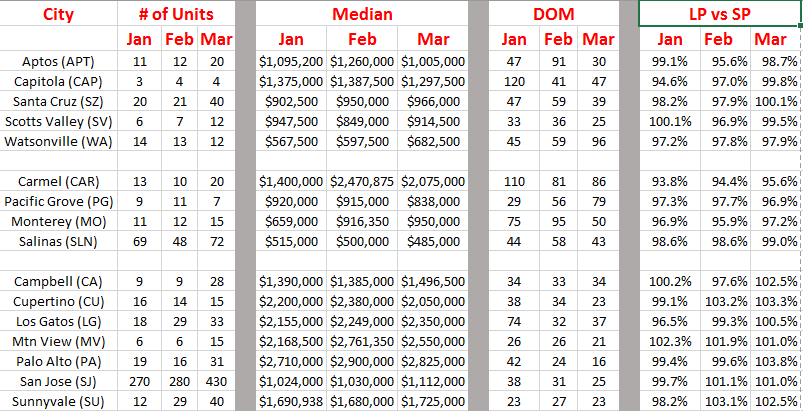APRIL 2019
As home values grow, sales in the San Francisco Bay Area continue to fall, according to the latest data from property analytics provider CoreLogic. In total, only 4,354 homes were sold in Alameda, Contra Costa, Marin, Napa, Santa Clara, San Francisco, San Mateo, Solano and Sonoma counties in February which was down 12.8% from the same time last year. While the drop is not as steep as it had been in previous months, the number of homes sold in the Bay Area is still 43.9% below the area's historical average for February. "For the third month in a row, Bay Area home sales were at an 11-year low for that month," Andrew LePage, a CoreLogic analyst, said in a prepared statement.
Such numbers have to do with the Bay Area's notoriously-high home values. The median home now commands $770,000, up 5.5% from last month and 2.7% from Feb 2018. Only 24% of all homes sold have cost less than $550,000. In some ways, the Bay Area reflects an extreme version of what is happening across the country as a whole. As prices rise, fewer homebuyers are forced to put off a home purchase due to growing unaffordability. And growing numbers of homes are being purchased by absentee buyers in the San Francisco area, 19.5% of all homes were bought by investors.
Lower mortgage rates are making for a rosy spring selling season
The real estate market is thawing in response to the sustained decline in mortgage rates and rebound in consumer confidence. Freddie Mac reports mortgage rates have dipped quite dramatically since the start of the year which should help on the home buyer affordability front. Freddie economists predict that the 30-year fixed-rate mortgage will average 4.5% in 2019 and increase to 4.8% in 2020.
The number of older renters in the US is skyrocketing
The number of older Americans who are renting their homes, rather than owning them outright, has increased markedly over the last decade, driven in part by an overall aging population and the lingering effects of the foreclosure crisis, according to new research.
The research shows that between 2007 and 2017, the number of renter households aged 60 and older jumped from 6.5 million to 9.4 million, or an increase of 43 percent.
Younger renters in their 20's and early 30's still rent in larger total numbers, coming in at nearly 15 million households. But that demographic saw only a 7% increase during that same period. Renter households between the ages of 35 and 59 increased by 17% between 2007 and 2017, which is also significantly less than the increase among older Americans.
The increase in renter households also outpaced the growth of homeownership in every age range. All older age ranges saw declines in their homeownership rates during that time period because "the older population is no longer enthusiastic about homeownership, with many seniors starting to downsize and move into rentals."
This growing share of older Americans is bound to have an impact on the U.S. real estate market. This is a group of people that witnessed firsthand the impact of the 2007 housing crisis and the re-shaping of the economy, forcing most of them to give up their homeowner status and move into rental apartments. It's important for developers to acknowledge the particular needs of older renters and plan accordingly.
First Quarter Statistic Comparison


